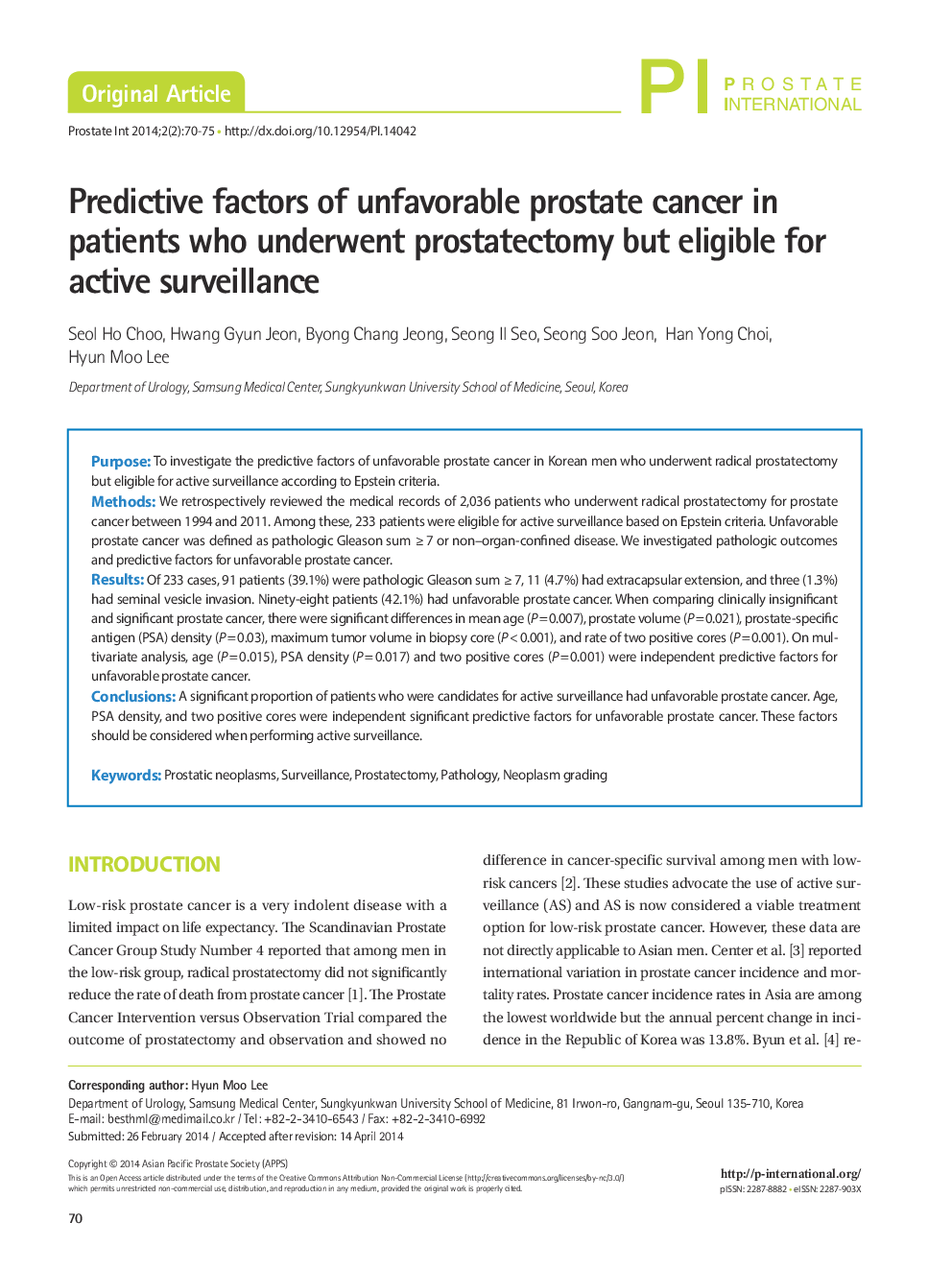| Article ID | Journal | Published Year | Pages | File Type |
|---|---|---|---|---|
| 4274199 | Prostate International | 2014 | 6 Pages |
PurposeTo investigate the predictive factors of unfavorable prostate cancer in Korean men who underwent radical prostatectomy but eligible for active surveillance according to Epstein criteria.MethodsWe retrospectively reviewed the medical records of 2,036 patients who underwent radical prostatectomy for prostate cancer between 1994 and 2011. Among these, 233 patients were eligible for active surveillance based on Epstein criteria. Unfavorable prostate cancer was defined as pathologic Gleason sum ≥7 or non–organ-confined disease. We investigated pathologic outcomes and predictive factors for unfavorable prostate cancer.ResultsOf 233 cases, 91 patients (39.1%) were pathologic Gleason sum ≥7, 11 (4.7%) had extracapsular extension, and three (1.3%) had seminal vesicle invasion. Ninety-eight patients (42.1%) had unfavorable prostate cancer. When comparing clinically insignificant and significant prostate cancer, there were significant differences in mean age (P=0.007), prostate volume (P=0.021), prostate-specific antigen (PSA) density (P=0.03), maximum tumor volume in biopsy core (P<0.001), and rate of two positive cores (P=0.001). On multivariate analysis, age (P=0.015), PSA density (P=0.017) and two positive cores (P=0.001) were independent predictive factors for unfavorable prostate cancer.ConclusionsA significant proportion of patients who were candidates for active surveillance had unfavorable prostate cancer. Age, PSA density, and two positive cores were independent significant predictive factors for unfavorable prostate cancer. These factors should be considered when performing active surveillance.
